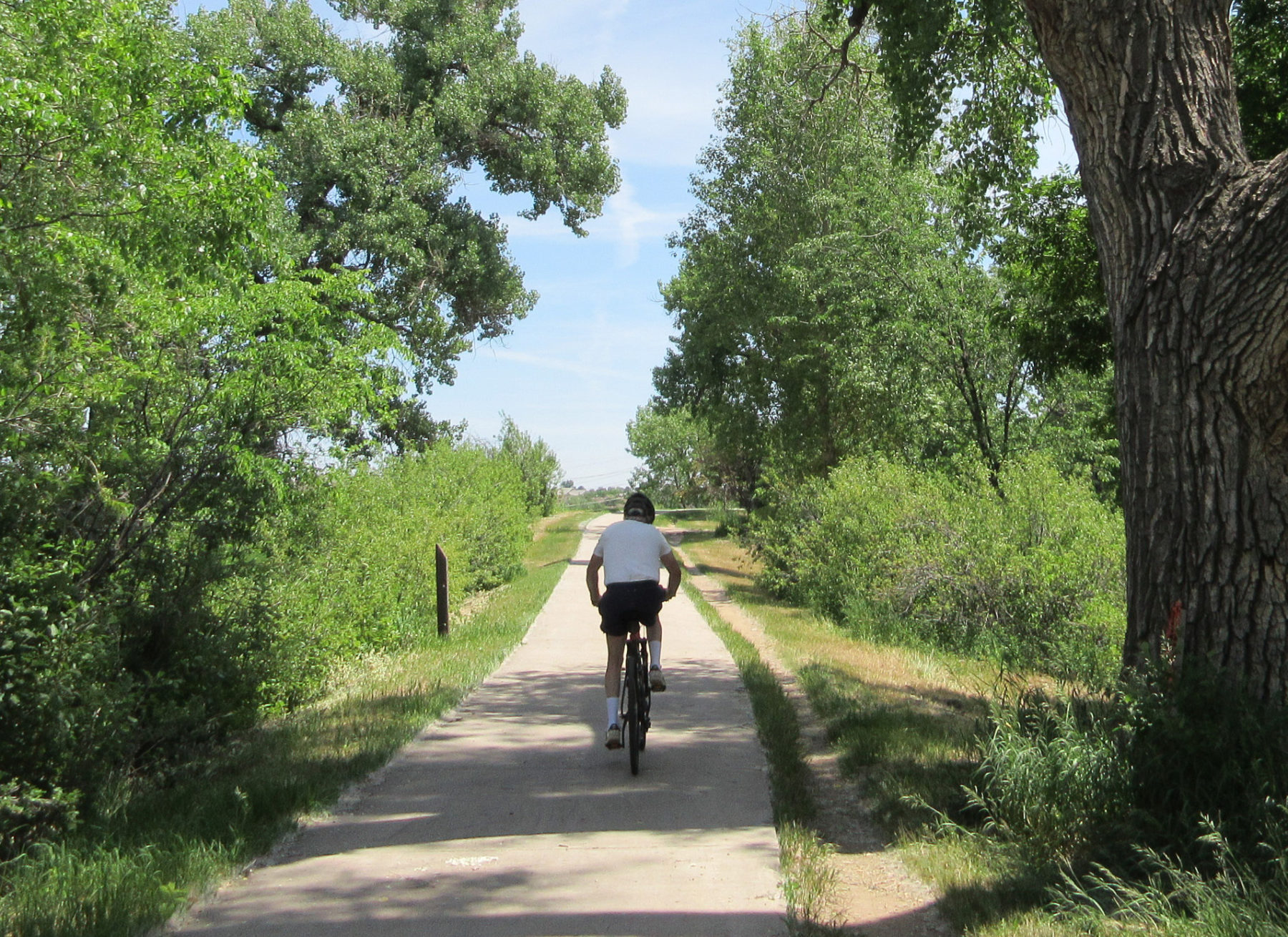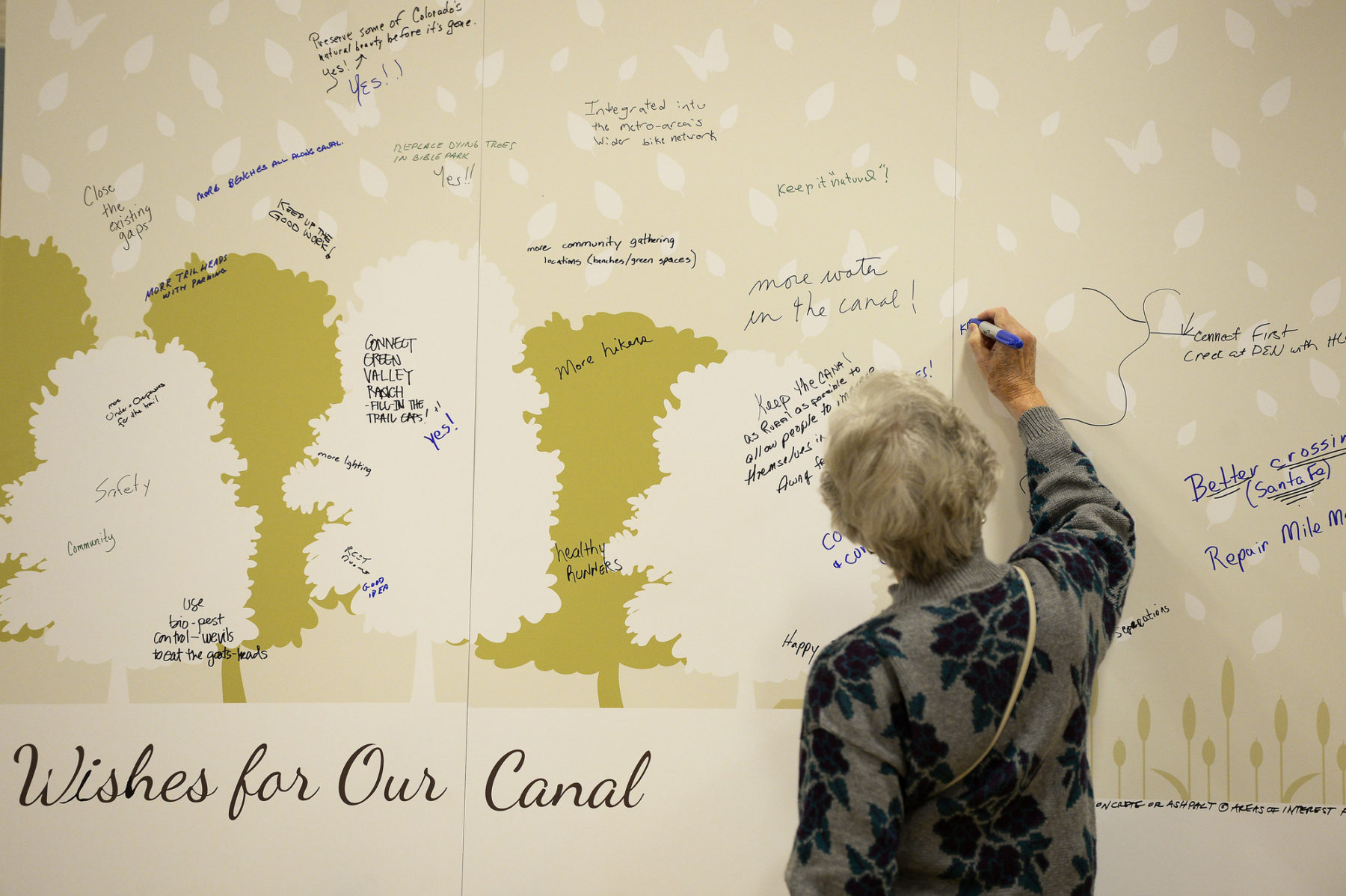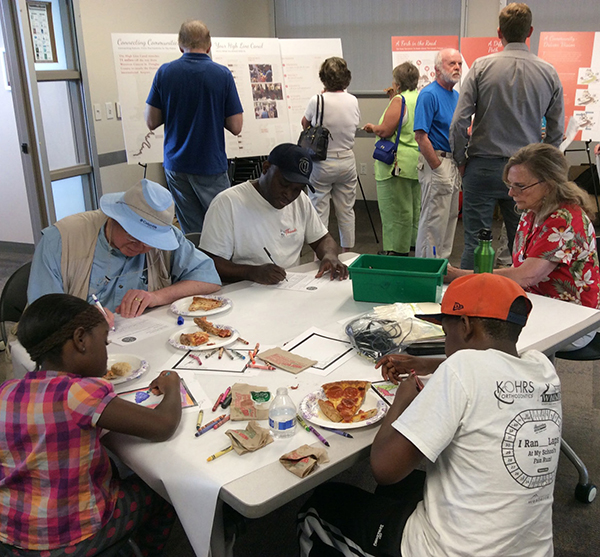Think Big: Public Engagement
Digging into scenario planning and exploring questions about how to field community input
 Sasaki
Sasaki

The Community Vision Plan for the High Line Canal is a forward-looking vision to preserve and enhance a beloved regional greenway in Colorado’s Front Range. On Wednesday, March 28, the Vision Plan was recognized by the American Planning Association as the Gold 2018 National Planning Achievement Award for Public Outreach from the American Planning Association (APA).
The award recognizes the collaborative effort of High Line Canal Conservancy, Denver Water, and 11 other jurisdictions to bring together a diverse region to identify a shared vision for the Canal’s future. Sasaki led the planning process, along with a team including Matrix Design Group, PlaceMatters, and Inkhouse.
This planning process is a model for engaging a geographically expansive and culturally diverse region. To build consensus towards a shared vision among stakeholders, community members, and jurisdictions, its success hinged on effective communication—conveying planning ideas through accessible language and concepts. As a result of this robust community engagement effort, this is the first time in the Canal’s 134 year history that all jurisdictions have come together to support a common vision for the Canal’s future evolution and preservation.

The initiative brought together thousands of residents—along with stakeholders and community leaders—from all over the Denver region to identify the desired vision for the Canal’s future.
The Canal today is at an important crossroads. Originally built in the late 1800s to deliver irrigation water, the Canal has transformed into an increasingly recreational resource. More than 500,000 recreational users enjoy the trails along the Canal greenway each year. The Canal’s green, natural character is a popular peaceful retreat in the region, providing an amenity whose total area is larger than New York City’s Central Park; however, its natural character is not sustainable in today’s water context and planning for its future means considering new approaches to stewardship. More than 70% of its water evaporates or seeps out from the earthen canal, which supports the green character of its surroundings, but is ultimately not a responsible way to deliver irrigation water in today’s era of water conservation.
The Canal meanders 71 miles through the eleven different jurisdictions in the Denver region, starting in the foothills of the Rocky Mountains. Along the way, it traverses and serves a full mosaic of diverse communities in the region—from dense neighborhoods, schools, and parks; to suburban neighborhoods and developing new communities; to open prairie lands with spectacular views of the Rocky Mountains. The planning process yielded a common vision that celebrates the diversity of the Canal and the shared values of many groups of stakeholders—demonstrating the value of open, inclusive planning to bring together communities around common goals.

The outreach process, led by Sasaki, included a diverse mix of tactics to reach the broadest possible audience. “Adventure on the High Line Canal”—branded to express a spirit of journey and to convey a powerful forward-looking story—was a lively and fun series of forums for public engagement that produced valuable inputs into the Vision Plan. The series of engagement events included 12 community open houses with more than 3,500 participants; 70 community events hosted all along the full 71 mile stretch of the Canal; two online surveys with 500 online survey participants; eight strategic input sessions reaching over 40 leaders; 125 youth engaged through events and activities; 30 informational presentations; and 60 engagements with community leaders and governmental staff.
The key to the highly successful process was a focus on storytelling. Planning processes can often be filled with jargon, so the Sasaki team took care to convey ideas plainly and boldly in ways that all audiences could access. The Vision Plan was a chance to write the story of the Canal’s future and for it to move forward, everyone needed to be able to take part in shaping it. This inclusive approach to framing the key issues, examining the potential solutions, and the considering necessary tradeoffs made the entire visioning process more approachable and understandable for participants—ultimately helping them be more open-minded and imaginative about future possibilities that could benefit a variety of stakeholders at once.
To learn more about this unique community engagement approach, read a perspective from project manager Jill Allen Dixon, AICP.
Digging into scenario planning and exploring questions about how to field community input
Recasting the "vision plan" as a storytelling exercise to get community members of all ages and backgrounds invested in the future of Denver's High Line Canal